The FIFA Women’s World Cup is here and already hitting on all cylinders. Hosts France opened the tournament by winning 4–0 against the Korea Republic at Parc des Princes. Big names like Germany, Brazil, and England also won their opening games in their respective groups. This tactical analysis preview will give you a perspective on how the match could unfold.
Matchday one will be closed by Group F’s encounter between the United States and Thailand when they meet at Stade Auguste-Delaune II this Tuesday. With three world titles under their belt and achieving consistent third-place finishes, the United States are clear favourites against Thailand.
On the other hand, Thailand are currently rising as one of the Asian giants in women’s football with two consecutive Women’s World Cup appearances as evidence.
Lineups
Under Jill Ellis, United States like to play with a 4–3–3 formation. Alyssa Naeher looks set to start between the sticks with Abby Dahlkemper and Becky Sauerbrunn as the centre-back pairing. Aggressive full-backs Kelley O’Hara and Crystal Dunn will likely start alongside them. In the middle of the park, Julie Ertz will almost definitely start as the defensive midfielder, and possibly flanked by Rose Lavelle and Lindsey Horan. Up front, the trio of Tobin Heath, Alex Morgan, and Megan Rapinoe looks to start the game.
Thailand’s Nuengrutai Srathongvian will likely set her team in a 4–2–3–1 which will probably shift into 4–4–2 defensively. Waraporn Boonsing seems to be the main choice in the goal. She will be supported by Warunee Phetwiset, Natthakarn Chinwong, Duangnapa Sritala, and Sunisa Srangthaisong. The most likely choice as the double pivot is Pikul Khueanpet and Pitsamai Sornsai. The trio of Kanjana Sungngoen, Silawan Intamee, and Taneekarn Dangda looks to support half-American striker Suchawadee Nildhamrong in the frontline.
Tactical Analysis – The United States set to dominate
The United States will almost definitely control the possession throughout the game with their positional play. They will look to pin Thailand back by sending their attacking midfielders high into the half-spaces. The objective is to gain control in dangerous areas; therefore creating combinations to penetrate Thailand’s defence.
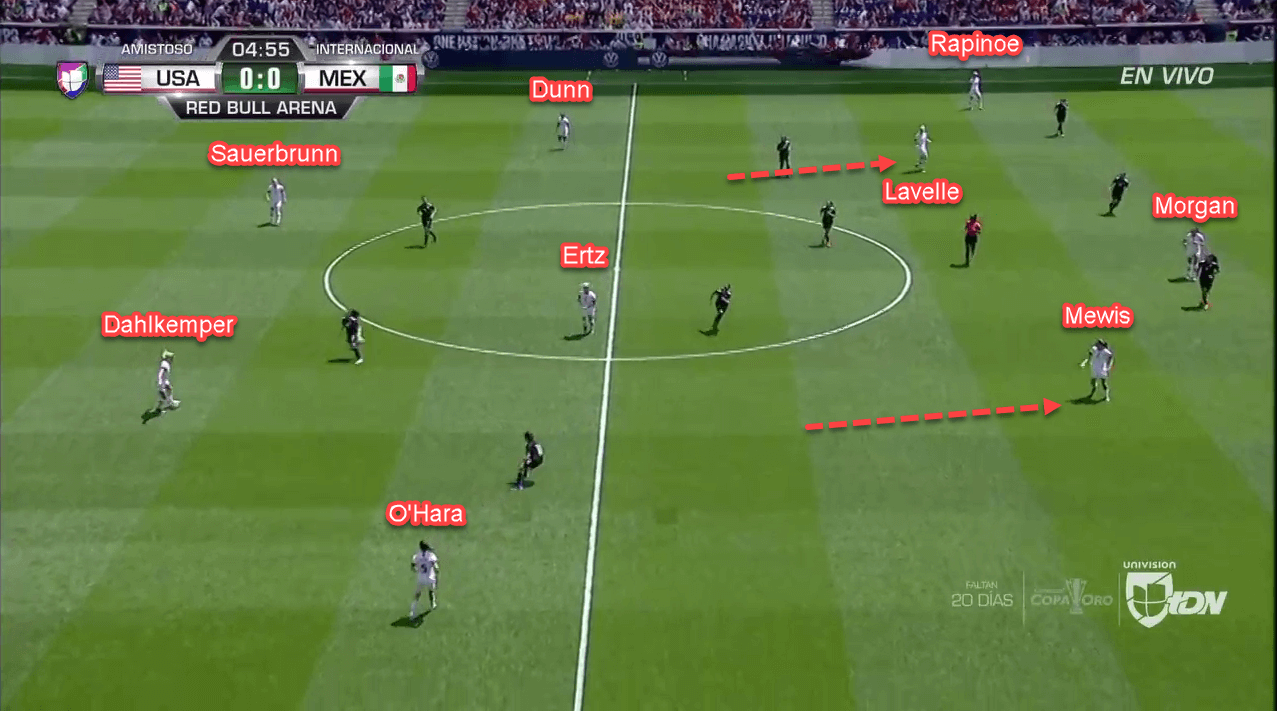
By putting up players against their opponents’ backline, the United States can pin their rivals back and force them to sit deeper. Thailand will probably have to add more numbers in behind to contain the United States’ attack.
After pinning back their opponents, the United States will likely rotate their attackers’ positioning to disrupt their rivals’ defence. They may vary their approach by either sending the full-back wide to make overlapping runs and tucking the winger inside or task the winger to hug the touchline while the full-back or the attacking midfielder makes a run inside the half-space. An alternative option could be dropping the winger back to open space for the attacking midfielder in behind while the full-back stays in the half-space.
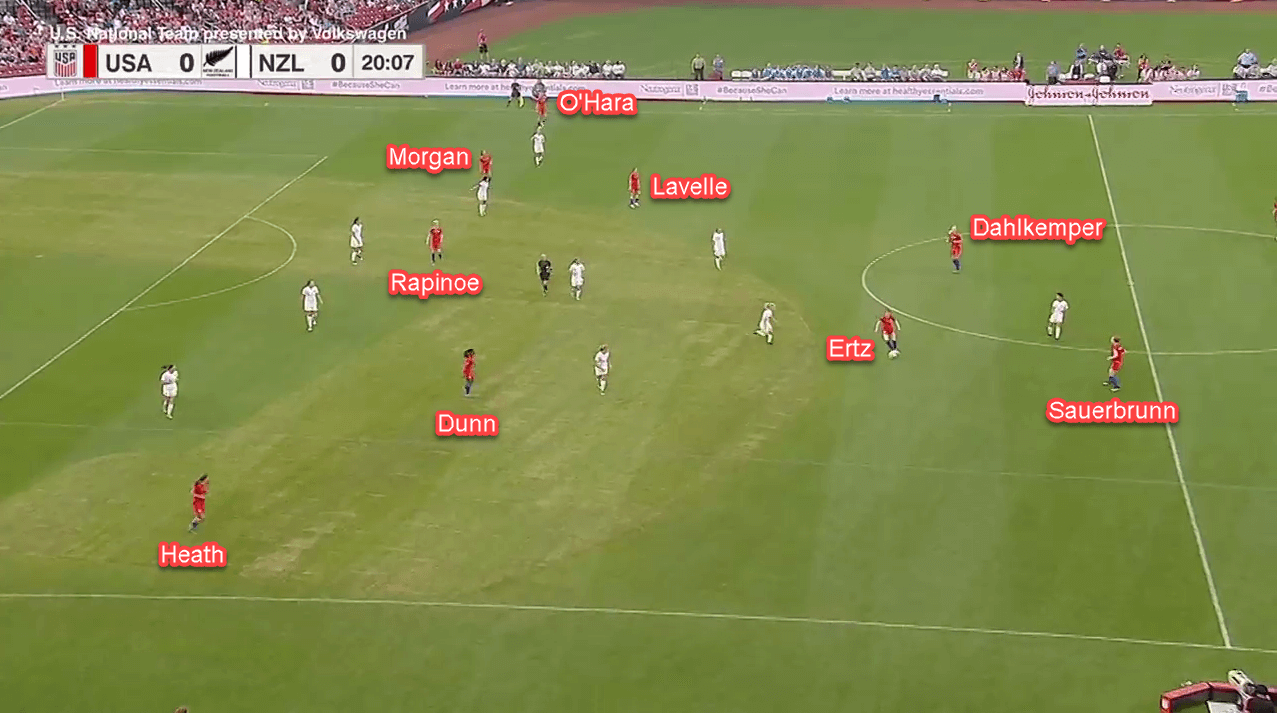
Doing so would draw defenders out of their positions and allow their player(s) to be positioned in an advantageous area. Once they rotate and put a player in an advanced situation, the player then would send a cross into the box; with numerous options available.
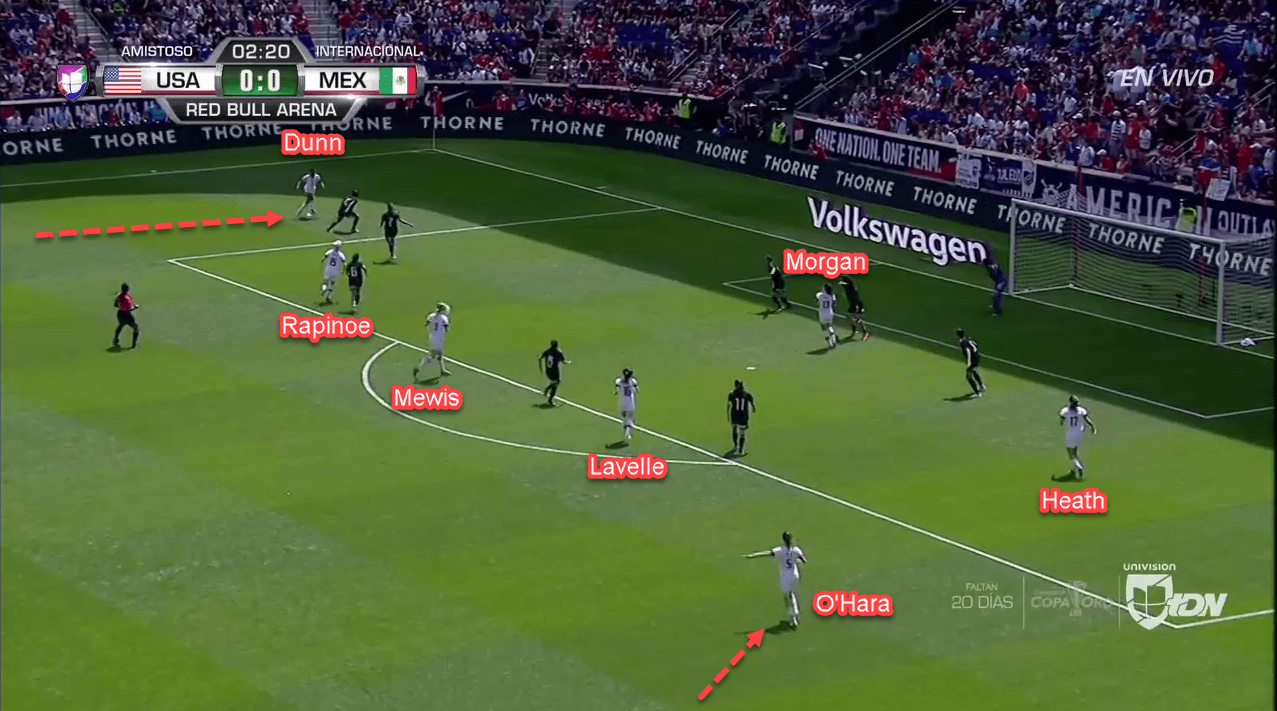
Low-crosses and high full-backs
Using tactical analysis, another option could see the United States send low crosses into the far-post; similar to what Pep Guardiola’s Manchester City like to do this season. At the far post, a winger or an attacking midfielder would come from the opponents’ full-back blind-spot to attack the ball and tap it home.
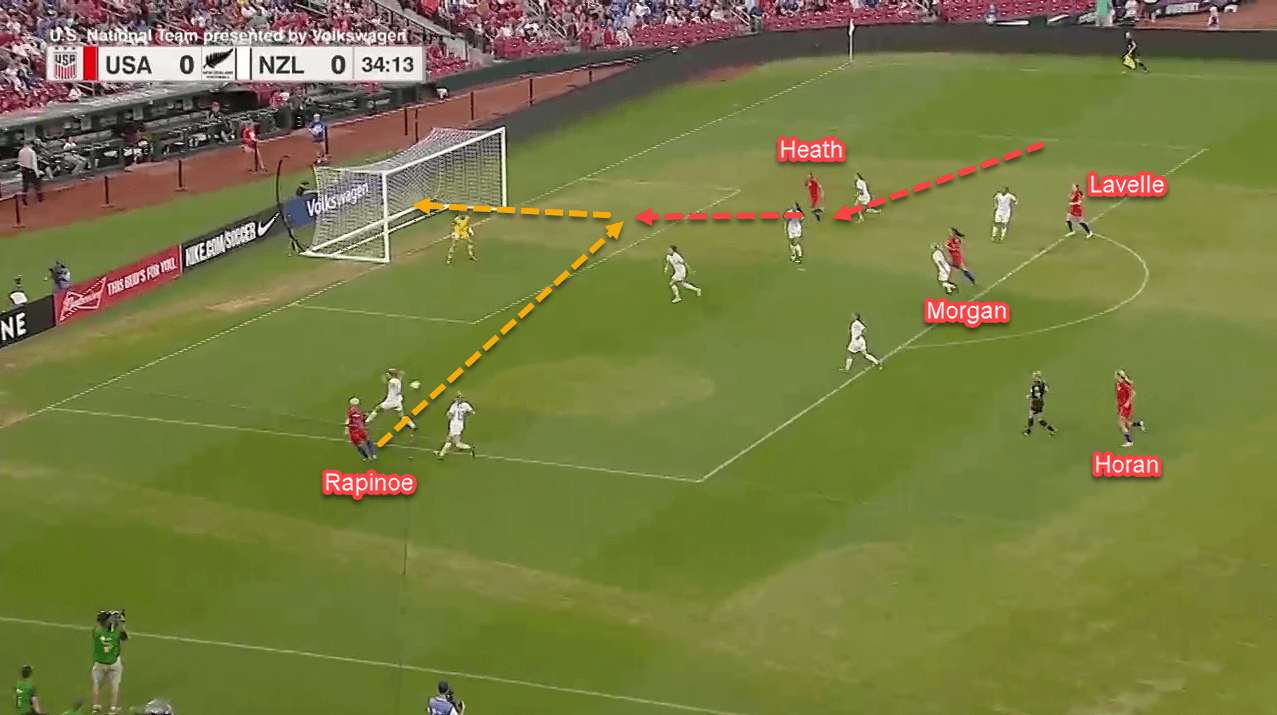
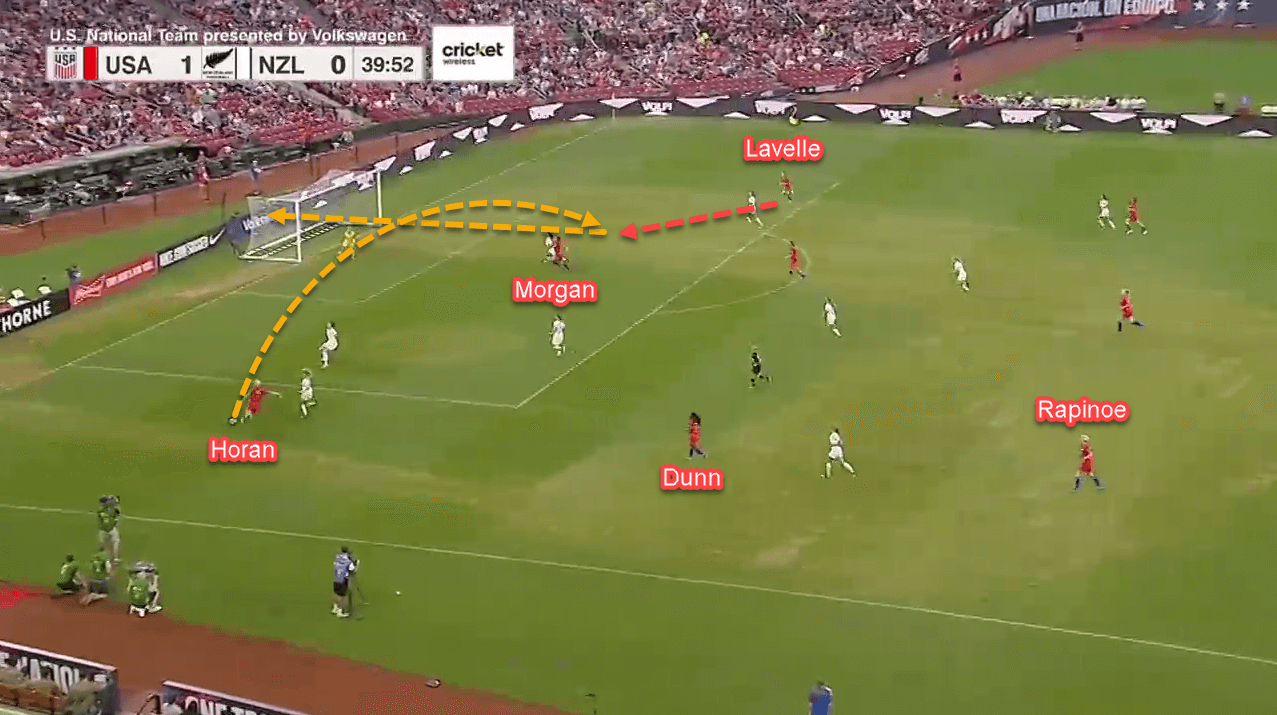
The Stars and Stripes also have a very aggressive pair of full-backs in O’Hara and Dunn. Both of them love to join the attack, are good one-versus-one situations and brilliant in making overlapping and underlapping runs. They also possess a good eye for goal. In fact, Dunn has 24 goals from 85 appearances for her country; quite a record for a full-back.
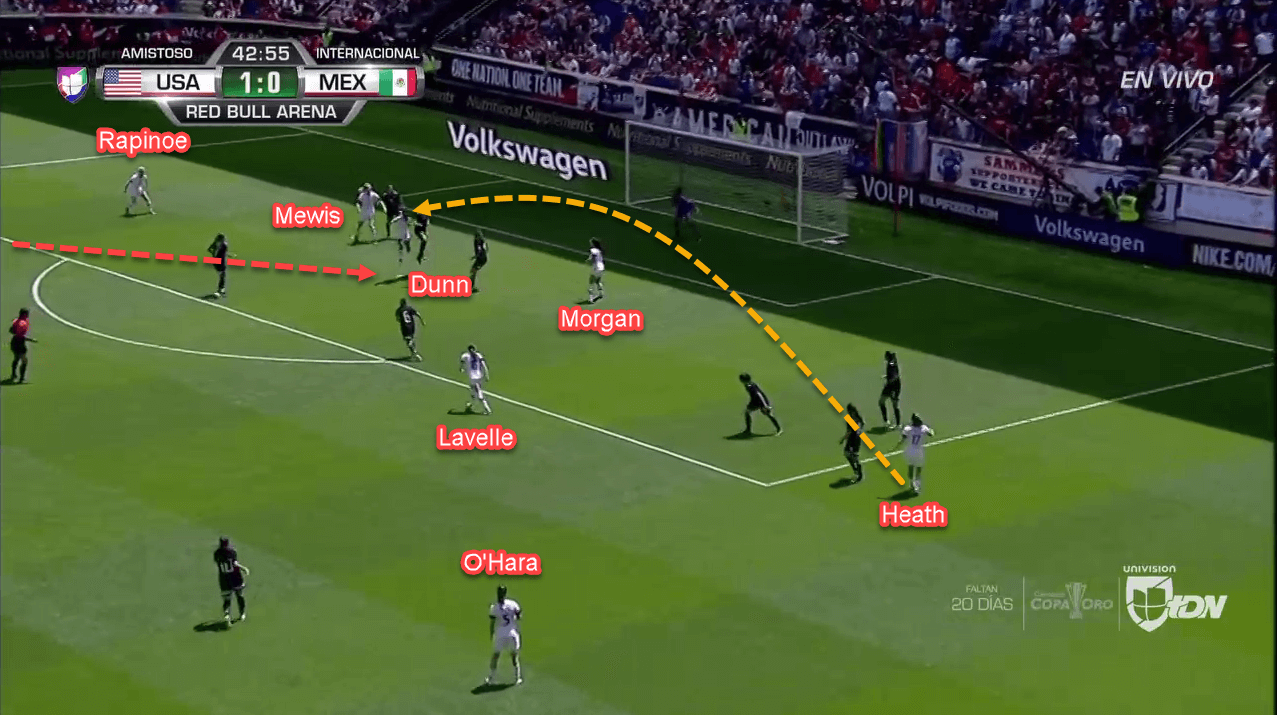
The United States’ potential defensive issues
As mentioned before, the United States have a pair of very attacking-minded full-backs that like to go up and join the forwards. By doing so, they would probably leave their initial positions and give their opponents huge space to attack.
The United States’ problems also come from their attacking midfielders. Often, they will want to go forward with the full-backs. Even though this gives the United States more forward pass options, but make them more vulnerable since the defensive midfielder would have less passing options near by.
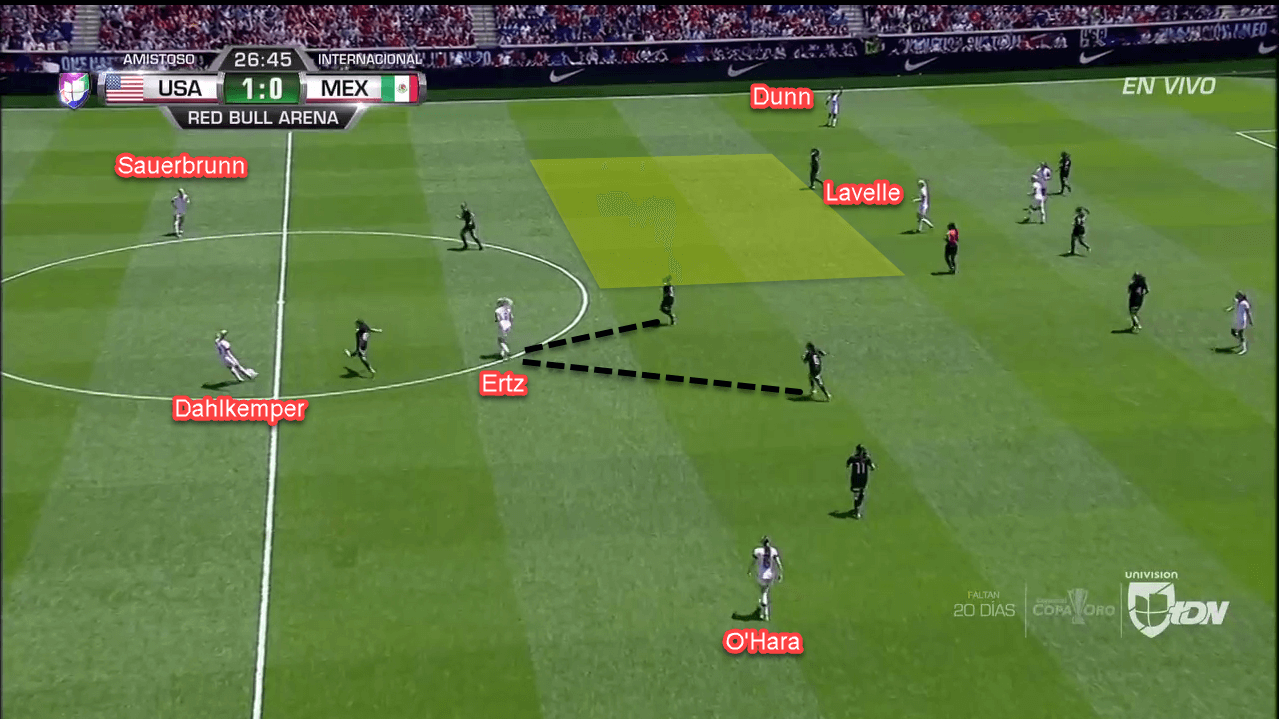
Such aggression could hurt the United States in two ways. First, the defensive midfielder would only have backwards passing options; thus decreasing her team’s offensive threat. Secondly, she could be pressed facing her own goal and potentially lose possession with little cover on the flanks; since the full-backs were in a higher position.
One way that the United States could solve this issue is by dropping the ball-side attacking midfielder next to the defensive midfielder when the full-back advances. This is necessary because the defensive midfielder then would have a near passing option and a teammate to cover the area left by the full-back.
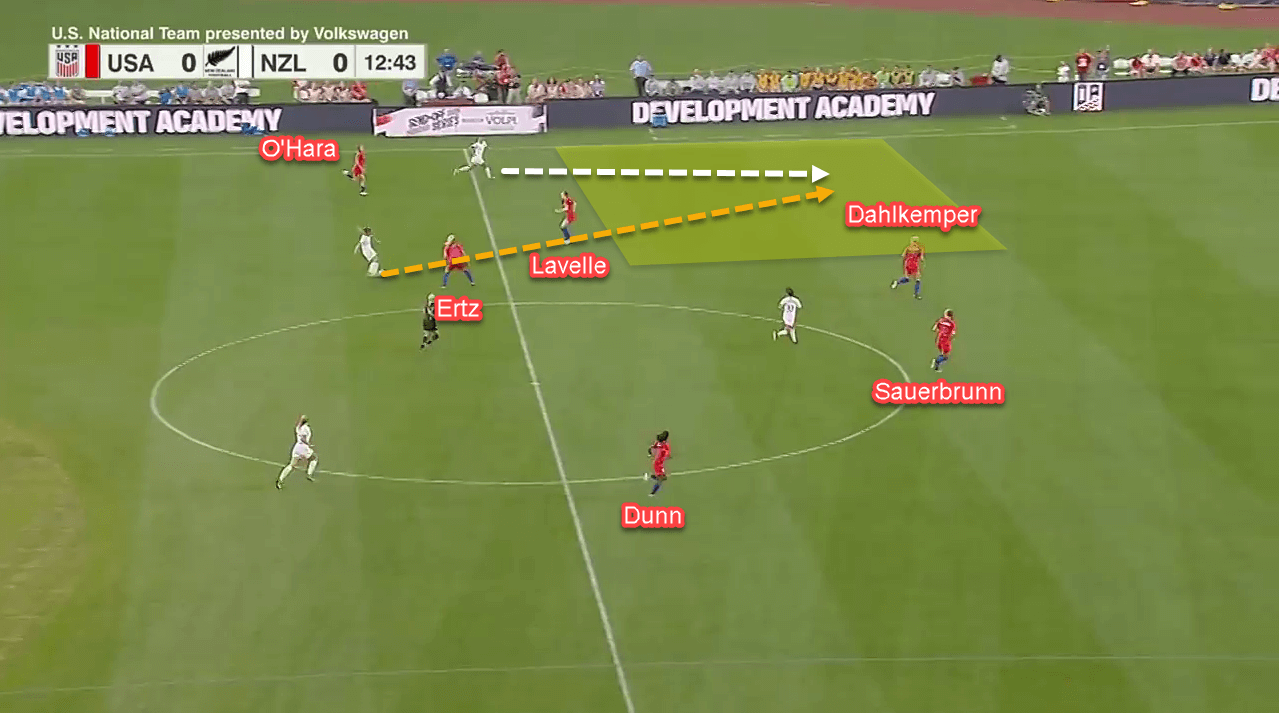
How can Thailand hurt the giants?
Thailand are a counter-attacking team that likes to attack with three to four players at once. In their 4–2–3–1 or 4–4–2, their wingers rarely drop to help the defence. Thailand would likely put their wingers high and wide even in defensive situations so they could start their transitional attacks earlier.
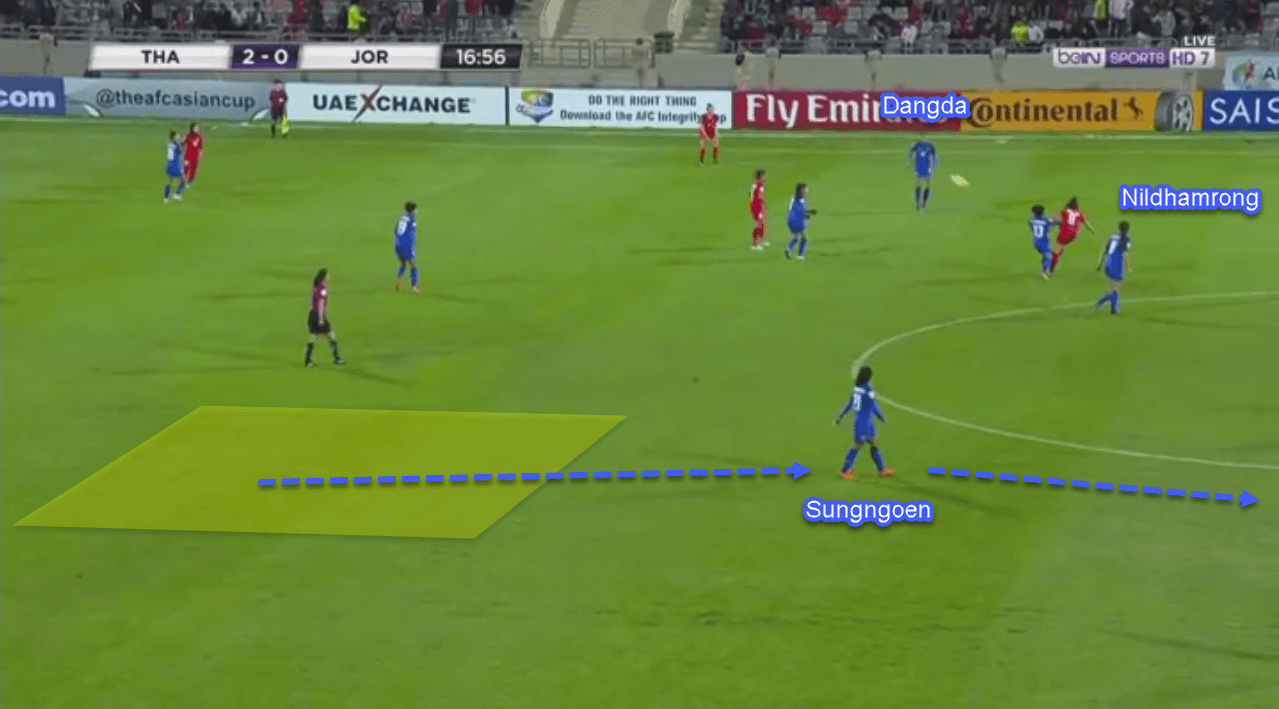
The attacking midfielder would receive the ball from behind or via a lay-off from the striker and then send it quickly to the wide winger. The on-ball winger would likely stay wide and provide crosses into the box. That gives them four players in their counter-attacks.
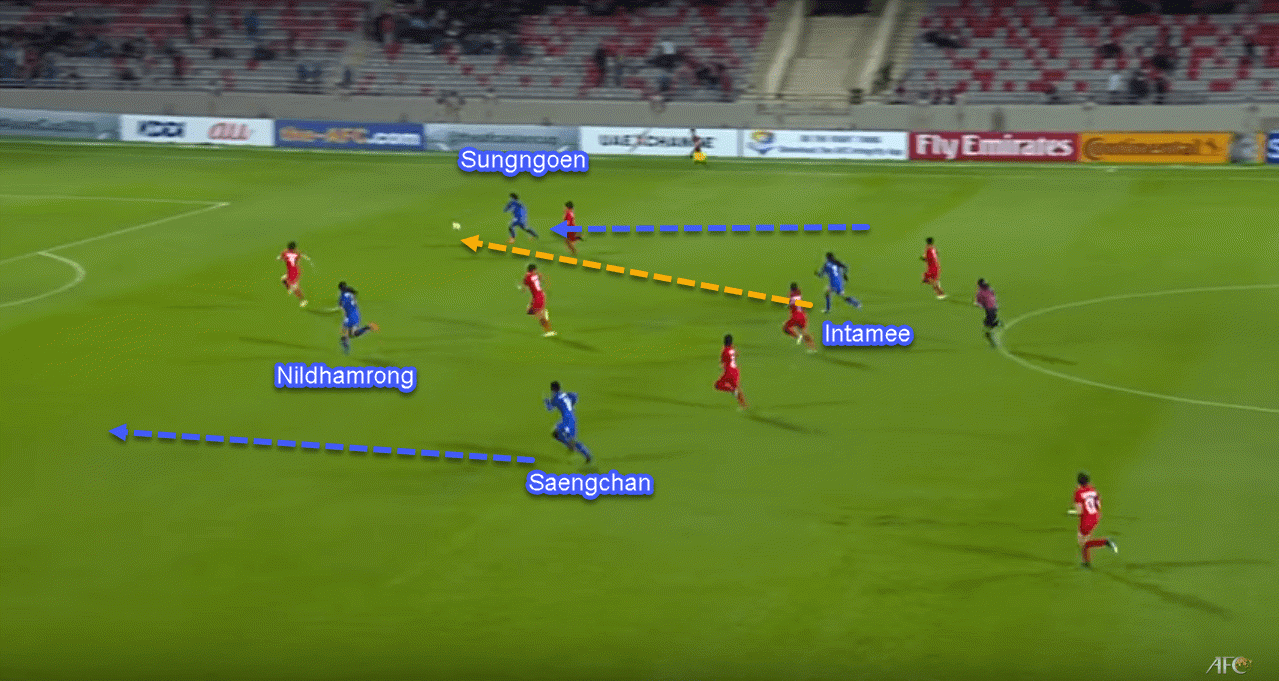
The striker would likely stay central and be Thailand’s main crossing target. At the far post, the far-sided winger would come inside and be another option in the box. Meanwhile, the attacking midfielder would stay in the edge of the box to receive cut-backs or attack the second ball. With pacey wingers like Sungngoen; along with physical attackers like Nildhamrong and Dangda, Thailand have a good chance to hurt the United States in transitions.
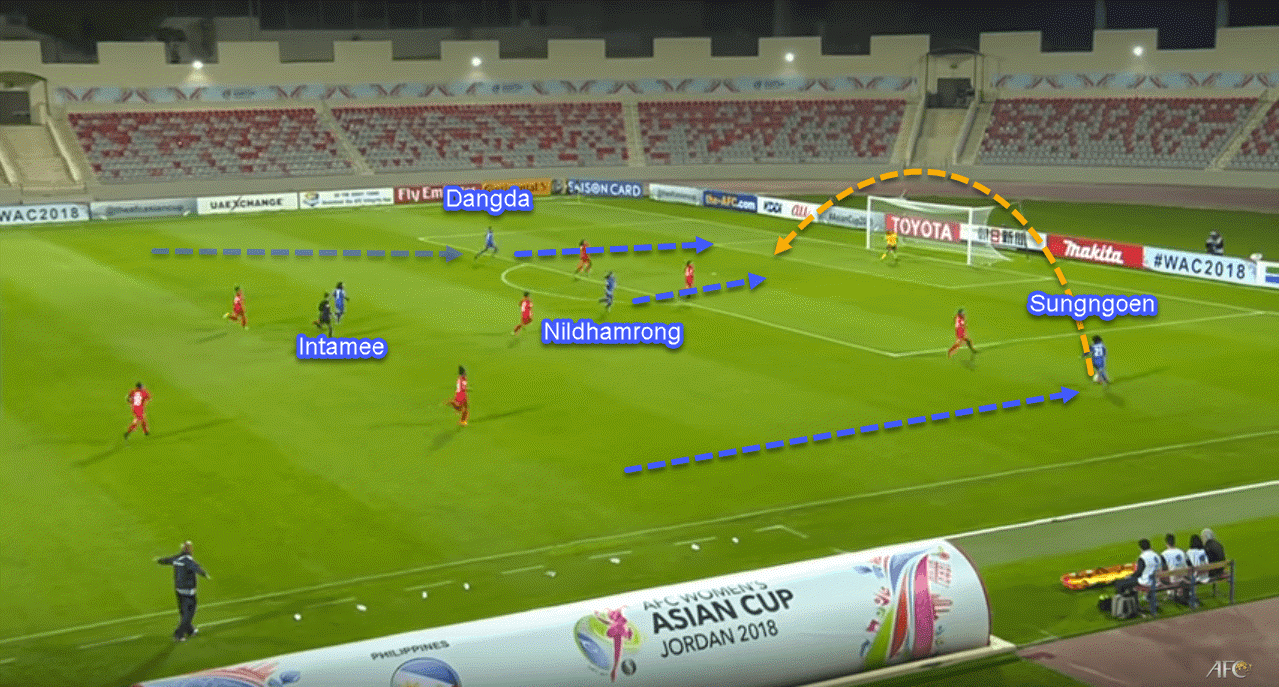
David versus Goliath
Experience-wise, Thailand are far behind the United States. The Stars and Stripes have eight players who have more than 100 international caps; six of them will participate in their third World Cup. On the other hand, Thailand only have four players that have played 100 games for their country; and only three World Cup matches under their belt between them.
Physically, the United States’ women are bigger than Thailand’s. The average height of the United States’ players are 170 centimetres, while Thailand’s are 163.2 centimetres. This is an advantage for the United States since they would have the edge in physical duels; especially from crossing situations and dead-ball scenarios.
Furthermore, it was also physicality that hurt Thailand in 2018; when they conceded a last-minute goal against Australia in the Women’s Asian Cup semifinal through Alanna Kennedy’s header. The goal sent the match into extra time and penalties, where Thailand eventually lost.
Conclusion
As the defending world champions, the United States have high expectations in France this summer. Even more so with the good starts from the other powerhouses. The United States’ will want to show their worth in this tournament.
With all due respect to Thailand, the United States seem far too strong for them. Their great tactical quality, technically-superb individuals, and experienced players would definitely make the United States the clear favourite in this match. Be prepared to see some goals in this contest.





Comments